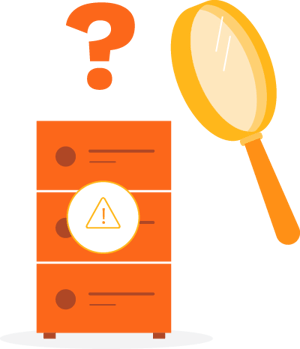Before every working professional came armed with a laptop and phone, information technology within a business was strictly under the jurisdiction of a localized IT department. IT teams maintained omniscient control of company data, ensuring compliance with government regulations and total security.
 But, as we’ve seen, the accessibility of technology experienced an enormous transformation that put the tools in the hands of employees, fostering a practice deemed “shadow IT” in which the maintenance and management of information technologies fall outside the jurisdiction of the central IT department. File sharing apps, social media, and email are now available to anyone with internet access. Data from a 2014 study performed by PMG Digital Agency maintained that around 53 percent of IT professionals report the use of unauthorized services within their company. DropBox, Facebook, and Excel macro, as a few examples, allow employees to work remotely, facilitate a smooth transferal of information, and provide specific technologies that an IT department with limited resources might find difficult to manage. It is important for businesses to take note of the logic behind the implementation of shadow IT, and recognize where their services fall short in providing employees with proper technological support and usability.
But, as we’ve seen, the accessibility of technology experienced an enormous transformation that put the tools in the hands of employees, fostering a practice deemed “shadow IT” in which the maintenance and management of information technologies fall outside the jurisdiction of the central IT department. File sharing apps, social media, and email are now available to anyone with internet access. Data from a 2014 study performed by PMG Digital Agency maintained that around 53 percent of IT professionals report the use of unauthorized services within their company. DropBox, Facebook, and Excel macro, as a few examples, allow employees to work remotely, facilitate a smooth transferal of information, and provide specific technologies that an IT department with limited resources might find difficult to manage. It is important for businesses to take note of the logic behind the implementation of shadow IT, and recognize where their services fall short in providing employees with proper technological support and usability.
The Risk of Shadow IT
As pretty a picture they paint, unsanctioned cloud services pose a huge threat to the security of your company’s sensitive data and could have disastrous financial consequences. Third-party hardware and software do not undergo the same security measures as IT-approved solutions, putting outsourced company information at risk of theft, breach, or malware infection. Your IT department in-house might not be familiar with the entire scope of third-party information technology in use, making disaster recovery all the more difficult and potentially disastrous. Due to the unregulated nature of some IT systems, there are outside agencies that audit organizations in order to ensure measures of customer data protection are being met.

When there’s a system in question within your company that hasn’t been formally screened or consistently maintained under company surveillance, failed audits can result in lucrative and time-consuming compliance efforts, as well as significant fines. In addition, the diversity of applications would necessitate a constant process of importation and exportation, which increases the risk of data loss and inconsistency between figures and would reduce the return on investment of the IT department already in place, whose facilities are shirked in light of third-party solutions.
Restructure versus Restrict
Shadow IT presents an enticing premise, and its goals are not ignoble. Employees believe they are doing something beneficial for the company by circumventing regulations and procedure in pursuit of efficiency and user accessibility. The elimination of shadow IT is neither an effective nor desired goal. The consequence of shadow IT is the product of demands not catered to within the infrastructure of a company, and restricting access to third-party servers without providing alternate solutions will only decrease productivity and satisfaction.
IT departments within a business are a service like any other; there ought to be a sense of urgency amongst IT professionals to constantly contend with market forces and provide their own creative solutions. This could mean integration in some cases, new low-risk technologies identified, vetted, and supplied through the funnel of IT, safely expanding user base and capacity. It certainly means embracing the Cloud as the most modern form of user-friendly information-sharing, having given a new definition to flexibility, collaboration, and efficiency. Of course, integration of cloud-sharing interfaces should not come without the adoption of proper authentication, authorization, and accounting mechanisms. It is essential that the company maintain total visibility into all cloud services in use, in order to seamlessly enforce security measures and survey usage patterns.

Communication is also imperative for a successful IT department. Understanding the needs and experience of employees regarding technology is the only thing that will ensure growth and allow for progressive development that keeps pace with the trajectory of the market. Ensuring easy communication between an IT department and end-users is fundamental in educating employees on the risks of disconnected IT, a step towards fostering a security-aware body that backs the vision of the company. The manifestation of “Shadow IT” can be a sign that business needs are not being met in an efficient manner, but trading efficiency for security can be a very risky proposition. A good DLP software (Data Loss Prevention) might seem like the proper counter-solution, but it would not stop something that appears non-malicious (as ransomware did at first) from accessing your network.
As spearheads of a company’s technological function, IT professionals must take it upon themselves to be amorphous, constantly receptive to feedback that will reshape a part of the company system to make the whole business faster and stronger. In an increasingly mechanized world, there is a responsibility to prioritize communication and collaboration so as not to isolate streams of knowledge. It is a paradox to think that this new, comprehensive access to information would isolate all of us who take to it, but it also means there is that much more to learn from those around us.
Categories: Security, IT Management, Network Security











